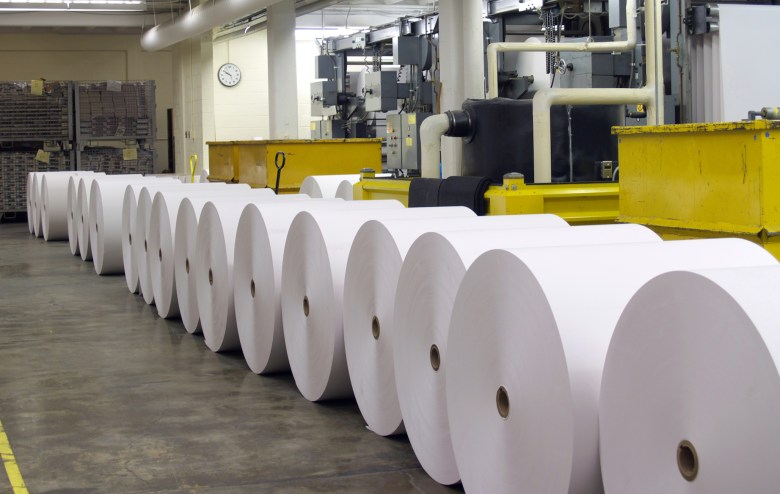
Pulp and paper producers face twin challenges, fuelling business investment in process control software and data analytics to avoid unplanned downtime, according to a study by ABI Research.
ABI Research’s Digitalisation in the Pulp and Paper Industry application analysis report identified that business investment in process control software and data analytics will grow by a seven per cent CAGR between 2021 and 2030 and result in a US$3.6 billion spend at the end of the decade.
The research firm said this is a result of gigantic machines converting wood pulp into paper-based products being a single point of failure and the industry embracing sustainability by the difficult task of incorporating recycled paper into production while retaining the required quality levels.
“Paper usage is changing with demand for newsprint and printed paper on the decline while sales of tissues and paper-based medical products are rising rapidly. Technology suppliers can help mills plan for adjustments and retain overall equipment effectiveness.” ABI Research industrial and manufacturing principal analyst Michael Larner said.
Overall, ABI Research forecasts that pulp and paper mills will be spending US$3.6 billion on digital technologies in 2030.
Spending on IoT devices and the supporting platforms that, for example, support efforts to prevent unplanned downtime will be worth US$1 billion in 2030 with spend on data analytics to evaluate and optimise the production processes forecasted to be worth US$370 million.
The foundations for the upswing in the flow of data will be investments in connectivity (forecasted to reach US$450 million in 2030) and network services (US$30 million in 2030).
All the technology investments need to be underpinned by robust cyber security, which is forecasted to be the highest growing spending area (CAGR 8.7 per cent), being worth US$120 million at the end of the decade.
“Paper needs to be smooth and of a consistent thickness to meet customer requirements. In addition, pulp and paper mills can be crippled by unplanned downtime as dust blocks up machines’ filters or the paper breaks as it’s being rolled or moves through the machine,” Larner mentioned.
“The size of the machinery and speed of production provide important test cases for technology suppliers. To meet these challenges, production facilities will increasingly look to predictive maintenance and quality automation.”
Comment below to have your say on this story.
If you have a news story or tip-off, get in touch at editorial@sprinter.com.au.
Sign up to the Sprinter newsletter
